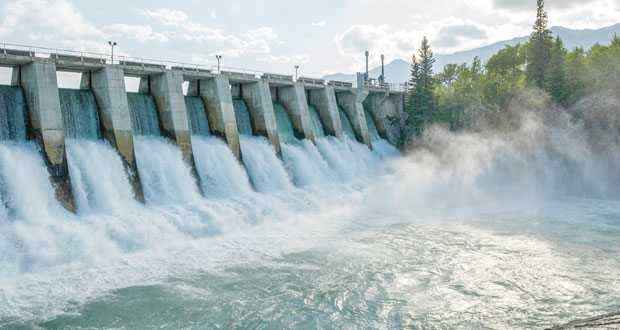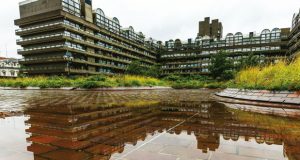HOT WATER SYSTEMS
How often have you needed to use hot water, so run the tap and wait for it to warm up? Most people do, but consider the combined water wastage this causes. The reason we must heat the water by running it is because water in the pipework cools rapidly under no-flow conditions when the tap is off. One simple solution is to install trace heating, which can be used on both new and existing systems. Installing trace heating means hot water in the pipework is maintained above a set temperature, so that when the tap is turned on it’s already warm. This not only has the benefit of reducing water wastage, but also helps to prevent pipes freezing and can reduce energy consumption.
STORMWATER
Sustainable Drainage Systems (SuDS) are well established in the UK with a range of best practice guidance available. SuDS are external features designed to mimic natural drainage by slowing run-off. They are relatively easy to retrofit into buildings and have several benefits including reducing pollution; recharging groundwater; lowering the cost of drainage; creating an alternative water supply when rainwater or stormwater is captured and reused; reducing risk of flooding on site; improving run-off water quality; reducing the Urban Heat Island Effect by replacing hardstand with natural green and blue spaces; improving biodiversity.
PUBLIC HEALTH AND OUR WASTEWATER SYSTEMS
Inadequate public health engineering can be a contributor to the spread of pathogens. With hundreds of millions of SAR-CoV-2 cases and almost seven million deaths registered worldwide, it would be remiss not to consider wastewater management and provision of public health engineering in a water management strategy. The risks exist at all stages of the plumbing cycle, right from the supply point connection to the final discharge into the public sewer or wastewater treatment plant.
There are many ways that pathogens can make their way into water supply systems, for example through water pipes in contaminated soil and cross-contamination of potable water with recycled water. The Pathogens Management Train (PMT) (Jeetun, 2021) is an innovative, seven stage concept that can be used by facility managers to identify the risks associated with pathogens and increase sanitary safety through careful design or improvements to new and existing systems.
New technologies are continually being developed that improve the sanitation environment using automatic methods of disinfection, such as the self-disinfecting trap. By using the PMT and adopting these technologies, facility managers and design specialists can remove various factors that could impact public health.
‘QUICK WINS’ FOR WATER CONSERVATION
Not all the sustainable water solutions we’ve covered so far are available to everyone. So here are some ‘quick wins’ for water conservation, including some of the well understood but sometimes overlooked methods:
- Install low flow taps
- Automatic switches to turn taps off after a timed period
- Water efficient appliances
- Dual or low flush toilets
- Replace hardstand areas with permeable pavements
- Review pump pressures
- Conduct a PMT review
- Installing greywater systems on a detached greywater producing / consuming activity
- Rainwater tanks; and
- Signage to remind staff and visitors to conserve water
So despite the increasing pressures on water resources, there are many practical, affordable solutions available to us now that can help ensure we make the most of this precious commodity.





